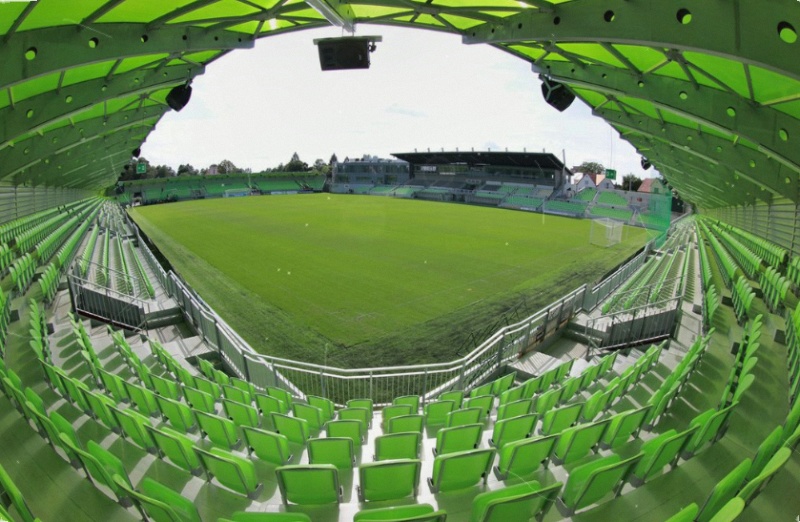|
Radek Fukala
Radek Fukala (born 1963 in Karviná, Moravian-Silesian Region of the Czech Republic) is a Czech historian. He is a Silesian, who graduated at University of Ostrava. He gained Ph.D. from Masaryk University. In 2002 he passed his habilitation at Charles University in Prague. Works *''Role Jana Jiřího Krnovského ve stavovských hnutích.'', Opava 1997. *''Manýrismus a globální krize 17. století?'', Opava 2000. *''Třicetiletá válka. Konflikt, který změnil Evropu.'' Opava, 2001. *''Stavovská politika na Opavsku v letech 1490-1631.'' Opava 2004. *''Sen o odplatě. Dramata třicetileté války.'', Praha 2005. *''Jan Jiří Krnovský. Stavovské povstání a zápas s Habsburky.'' České Budějovice 2005. *''Hohenzollernové v evropské politice 16.století. Mezi Ansbachem, Krnovem a Královcem (1523–1603).'', Praha 2005. *''Slezsko neznámá země Koruny české. Knížecí a stavovské Slezsko do roku 1740'', České Budějovice 2007. *''Poděbradové. Rod českom ... [...More Info...] [...Related Items...] OR: [Wikipedia] [Google] [Baidu] |
Karviná
Karviná (; pl, Karwina, , german: Karwin) is a city in the Moravian-Silesian Region of the Czech Republic. It has about 50,000 inhabitants. It lies on the Olza River in the historical region of Cieszyn Silesia. Karviná is known as an industrial city with tradition in coal mining. The historic centre in Karviná-Fryštát is well preserved and is protected by law as an urban monument zone. Administrative parts Karviná is made up of nine city parts and villages: * Doly *Fryštát *Hranice * Lázně Darkov * Louky *Mizerov *Nové Město *Ráj * Staré Město Geography Karviná is located about east of Ostrava on the border with Poland, in the historical region of Cieszyn Silesia. It lies in the Ostrava Basin. The town is situated on the right bank of the Olza River. The territory is rich in ponds. History The first written mention of Karviná is from 1268. It was located on a trade route, which helped its development. It gained various privileges, but the prosperity ended ... [...More Info...] [...Related Items...] OR: [Wikipedia] [Google] [Baidu] |
Moravian-Silesian Region
The Moravian-Silesian Region ( cs, Moravskoslezský kraj; pl, Kraj morawsko-śląski; sk, Moravsko-sliezsky kraj) is one of the 14 administrative regions of the Czech Republic. Before May 2001, it was called the Ostrava Region ( cs, Ostravský kraj). The region is located in the north-eastern part of its historical region of Moravia and in most of the Czech part of the historical region of Silesia. The region borders the Olomouc Region to the west and the Zlín Region to the south. It also borders two other countries – Poland (Opole and Silesian Voivodeships) to the north and Slovakia (Žilina Region) to the east. It is a highly industrialized region, its capital Ostrava was actually called the "Steel Heart of the Republic". In addition, it has several mountainous areas where the landscape is relatively preserved. Nowadays, the economy of the region benefits from its location in the Czech/Polish/Slovak borderlands. Administrative division The Moravian-Silesian Region is d ... [...More Info...] [...Related Items...] OR: [Wikipedia] [Google] [Baidu] |
Czech Republic
The Czech Republic, or simply Czechia, is a landlocked country in Central Europe. Historically known as Bohemia, it is bordered by Austria to the south, Germany to the west, Poland to the northeast, and Slovakia to the southeast. The Czech Republic has a hilly landscape that covers an area of with a mostly temperate continental and oceanic climate. The capital and largest city is Prague; other major cities and urban areas include Brno, Ostrava, Plzeň and Liberec. The Duchy of Bohemia was founded in the late 9th century under Great Moravia. It was formally recognized as an Imperial State of the Holy Roman Empire in 1002 and became a kingdom in 1198. Following the Battle of Mohács in 1526, the whole Crown of Bohemia was gradually integrated into the Habsburg monarchy. The Protestant Bohemian Revolt led to the Thirty Years' War. After the Battle of White Mountain, the Habsburgs consolidated their rule. With the dissolution of the Holy Empire in 1806, the Cro ... [...More Info...] [...Related Items...] OR: [Wikipedia] [Google] [Baidu] |
Silesians
Silesians ( szl, Ślōnzŏki or Ślůnzoki; Silesian German: ''Schläsinger'' ''or'' ''Schläsier''; german: Schlesier; pl, Ślązacy; cz, Slezané) is a geographical term for the inhabitants of Silesia, a historical region in Central Europe divided by the current national boundaries of Poland, Germany and the Czech Republic. Historically, the region of Silesia (Lower and Upper) has been inhabited by Germans (German speakers), Czechs, Poles and Slavic Upper Silesians. Therefore, the term Silesian can refer to anyone of these ethnic groups. However, in 1945, great demographic changes occurred in the region as a result of the Potsdam Agreement leaving most of the region ethnically Polish and/or Slavic Upper Silesian. There have been some debates on whether or not the Silesians (historically, Upper Silesians) constitute a distinct nation. In modern history, they have often been pressured to declare themselves to be German, Polish or Czech, and use the language of the nation whi ... [...More Info...] [...Related Items...] OR: [Wikipedia] [Google] [Baidu] |
University Of Ostrava
The University of Ostrava (Czech ''Ostravská univerzita'') is a public university in the city of Ostrava, Moravian-Silesian Region, Czech Republic. Founded in 1991, it is the newest public university in Ostrava. It consists of six faculties and two institutes providing university education. History The University of Ostrava was founded on 28 September 1991. Its origins can be traced back to 1953, when a training college for future primary school teachers was opened in the nearby town of Opava. In 1959, all teacher training within the region was streamlined into a single institution – the newly established Pedagogical Institute in Ostrava. Five years later, the institute was awarded university status and became an independent Faculty of Education, offering four-year degree courses to future primary school teachers. The range of degrees was later extended to include a five-year programme for future teachers of higher year groups. Gradually, other faculties, departments and r ... [...More Info...] [...Related Items...] OR: [Wikipedia] [Google] [Baidu] |
Masaryk University
Masaryk University (MU) ( cs, Masarykova univerzita; la, Universitas Masarykiana Brunensis) is the second largest university in the Czech Republic, a member of the Compostela Group and the Utrecht Network. Founded in 1919 in Brno as the second Czech university (after Charles University established in 1348 and Palacký University existent in 1573–1860), it now consists of ten faculties and 35,115 students. It is named after Tomáš Garrigue Masaryk, the first president of an independent Czechoslovakia as well as the leader of the movement for a second Czech university. In 1960 the university was renamed ''Jan Evangelista Purkyně University'' after Jan Evangelista Purkyně, a Czech biologist. In 1990, following the Velvet Revolution it regained its original name. Since 1922, over 171,000 students have graduated from the university. History Masaryk University was founded on 28 January 1919 with four faculties: Law, Medicine, Science, and Arts. Tomáš Garrigue Masaryk, pro ... [...More Info...] [...Related Items...] OR: [Wikipedia] [Google] [Baidu] |
Charles University In Prague
Charles University ( cs, Univerzita Karlova, UK; la, Universitas Carolina; german: Karls-Universität), also known as Charles University in Prague or historically as the University of Prague ( la, Universitas Pragensis, links=no), is the oldest and largest university in the Czech Republic. It is one of the List of oldest universities in continuous operation, oldest universities in Europe in continuous operation. Today, the university consists of 17 faculties located in Prague, Hradec Králové, and Plzeň. Charles University belongs among the top three universities in Central and Eastern Europe. It is ranked around 200–300 in the world. History Medieval university (1349–1419) The establishment of a medieval university in Prague was inspired by Holy Roman Emperor Charles IV, Holy Roman Emperor, Charles IV. He asked his friend and ally, Pope Clement VI, to do so. On 26 January 1347 the pope issued the bull establishing a university in Prague, modeled on the University of Paris, ... [...More Info...] [...Related Items...] OR: [Wikipedia] [Google] [Baidu] |
1963 Births
Events January * January 1 – Bogle–Chandler case: Commonwealth Scientific and Industrial Research Organisation scientist Dr. Gilbert Bogle and Mrs. Margaret Chandler are found dead (presumed poisoned), in bushland near the Lane Cove River, Sydney, Australia. * January 2 – Vietnam War – Battle of Ap Bac: The Viet Cong win their first major victory. * January 9 – A total penumbral lunar eclipse is visible in the Americas, Europe, Africa, and Asia, and is the 56th lunar eclipse of Lunar Saros 114. Gamma has a value of −1.01282. It occurs on the night between Wednesday, January 9 and Thursday, January 10, 1963. * January 13 – 1963 Togolese coup d'état: A military coup in Togo results in the installation of coup leader Emmanuel Bodjollé as president. * January 17 – A last quarter moon occurs between the penumbral lunar eclipse and the annular solar eclipse, only 12 hours, 29 minutes after apogee. * January 19 – Soviet spy Ghe ... [...More Info...] [...Related Items...] OR: [Wikipedia] [Google] [Baidu] |
Living People
Related categories * :Year of birth missing (living people) / :Year of birth unknown * :Date of birth missing (living people) / :Date of birth unknown * :Place of birth missing (living people) / :Place of birth unknown * :Year of death missing / :Year of death unknown * :Date of death missing / :Date of death unknown * :Place of death missing / :Place of death unknown * :Missing middle or first names See also * :Dead people * :Template:L, which generates this category or death years, and birth year and sort keys. : {{DEFAULTSORT:Living people 21st-century people People by status ... [...More Info...] [...Related Items...] OR: [Wikipedia] [Google] [Baidu] |
21st-century Czech Historians
The 1st century was the century spanning AD 1 ( I) through AD 100 ( C) according to the Julian calendar. It is often written as the or to distinguish it from the 1st century BC (or BCE) which preceded it. The 1st century is considered part of the Classical era, epoch, or historical period. The 1st century also saw the appearance of Christianity. During this period, Europe, North Africa and the Near East fell under increasing domination by the Roman Empire, which continued expanding, most notably conquering Britain under the emperor Claudius ( AD 43). The reforms introduced by Augustus during his long reign stabilized the empire after the turmoil of the previous century's civil wars. Later in the century the Julio-Claudian dynasty, which had been founded by Augustus, came to an end with the suicide of Nero in AD 68. There followed the famous Year of Four Emperors, a brief period of civil war and instability, which was finally brought to an end by Vespasian, ninth Roman em ... [...More Info...] [...Related Items...] OR: [Wikipedia] [Google] [Baidu] |


.jpg)




